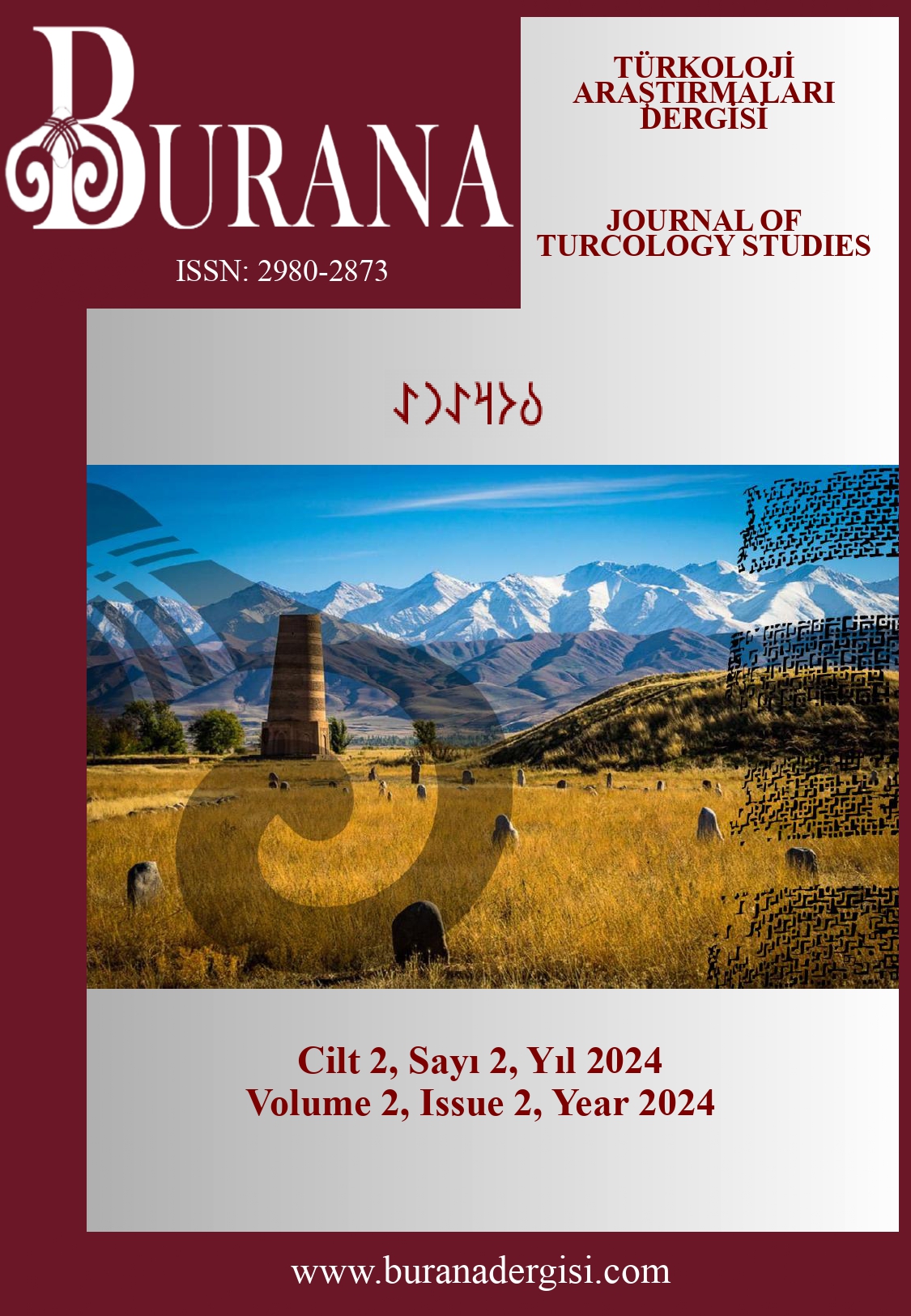18.Numaralı Sivas Şer’iyye Siciline Göre Sivas’ta Aile Hayatı (1885-1886 Yıllar)
DOI:
https://doi.org/10.5281/%20zenodo.14567851Anahtar Kelimeler:
Sivas, Evlilik, Aile Hukuku, Osmanlı Ailesi, Şerʻîyye SiciliÖzet
Aile, toplum içerisindeki bireylerin oluşturduğu en küçük sosyal birimdir ve tarihi süreçler içerisinde sürekli değişim ve gelişim göstermiştir. Aile kurumu değerlerin, gelenek ve göreneklerin nesilden nesile aktarılmasını sağlayarak, sosyal yaşamı düzenlemiştir. Ailelerin oluşmasında bölgesel faktörlerin etkisi büyüktür. Aile yapıları her toplumun dinî değerleri, gelenek ve görenekleri içerisinde şekillenmiştir. İslam hukukunu temel alan Osmanlı Devleti, aile kurumuna büyük önem vermiştir. Osmanlı toplum yapısı içerisinde de tek tip aile yoktur. Osmanlı aile yapıları, ailelerin yaşadığı coğrafyaya, mahallelere hatta köylere göre farklılıklar göstermiştir. Aile kurmak için atılan en önemli adım olan nikâhdır. Osmanlı Devleti nikâhların kadılar huzurunda kayıt altına alınmasına dikkat etmiştir. Kadıların verdiği kararların kayıt altına alınması şehir tarihine dair mahalli bilgileri kapsaması açısından değerlidir. Biz de bu çalışmamızda son Dönem Osmanlı Devleti’nin aile yapısını incelemeye çalıştık. Çalışmamızın, ana kaynağını 1885/1886 yıllarını kapsayan 18 Numaralı Sivas Şer’iyye Sicilindeki (1-44 sayfalar) belgeler oluşturmaktadır. Çalışmanın amacı belgelerde yer alan hüccetleri tasnif ederek, Osmanlı toplumunun aile yapısını anlamaktır. Çalışmamızın merkezi, tarihsel süreçte birçok medeniyetin ve devletin yerleşim yerlerinden biri olan Sivas şehri olmuştur. Ailenin temel öğeleri, mahalle, ev, yaşanılan mekânlar, evlenme, boşanma, çocuk sayısı, mihr, nafaka, vasi tayinleri gibi birçok konu başlıklar altında incelenerek genel bir değerlendirme yapılmıştır. Sonuç olarak incelenen dönemde, Sivas ailesi örneğinden Osmanlı aile yapısı ortaya konulabilmiştir.
Referanslar
Akgündüz, A. (1988). Şer’iyye sicilleri (mahiyeti, toplu kataloğu ve seçmeler). TDAV.
Aktaş, A. (2023). Mahremiyetin sosyal medya ile dönüşümünü Türk kültüründeki kapı mefhumu üzerinden okumak. Korkut Ata Türkiyat Araştırmaları Dergisi (Özel Sayı 1 (Cumhuriyetin 100. Yılına), 1207-1219. https://doi.org/10.51531/korkutataturkiyat.1357927
Akyılmaz, S. (2007) Osmanlı miras hukukunda kadının statüsü. Gazi Üniversitesi Hukuk Fakültesi Dergisi, XI(1-2), 471-502.
Akyol, T. (1999) Osmanlı’da ve İran’da mezhep ve devlet. Milliyet.
Aydın, M. A. (1989). Aile, Türkiye Diyanet Vakfı İslam Ansiklopedisi (TDVİA).
Cin, H. (1988). İslam ve Osmanlı kukukunda evlenme, Ankara Üniversitesi Hukuk Fakültesi.
Çelikdemir, M. ve Arıkan, M. (2022). Osmanlı’da korumaya muhtaç çocuklar ve vesayet kurumu: ayıntâb’daki uygulaması (1750-1806) (46-73). Gaziantep Üniversitesi Ayıntâb Araştırmaları Dergisi, 5(1), 49-73.
Demirel, Ö. (1990). 1700-1730 tarihlerinde Ankara’da ailenin niceliksel yapısı. Belleten, 54(211), 945-962.
Demirel, Ö. (1998) Osmanlı döneminde Sivas şehri ve esnaf teşkilatı. Sivas Belediye Kültür.
Demirel, Ö. (2006) Osmanlı dönemi Sivas şehri-makaleler. Sivas Valiliği Tarih ve Kültür Araştırmaları.
Düzbakar, Ö. (2003) Osmanlı döneminde mahalle ve işlevleri. U. Ü. Fen-Edebiyat Fakültesi Sosyal Bilimler Dergisi, 4(5), 7-108.
Ekinci, E. B. (2017). Osmanlı hukuku adalet ve mülk. Arı Sanat.
Ergenç, Ö. ve İnalcık, H. (1984). Osmanlı şehrindeki “mahalle”nin işlev ve nitelikleri üzerine. Osmanlı Araştırmaları, 4(4), 70-78.
Ertuğ, H. (2015). Şeriyye sicillerine göre hicri 1137 (1724-1725) senesi İstanbul’unda Osmanlı ailesinin evlenme ve boşanma verilerine göre. Akademik İncelemeler Dergisi, 1081, 75-107.
Göktaş, C. ve Hanım, G. (2022). Arşiv belgelerine göre 19. yüzyıl sonları 20. yüzyıl başlarında Osmanlı devleti’nde nafaka sorunsalı. Osmanlı Mirası Araştırmaları Dergisi (OMAD), 9(25), 541-565.
Göyünç, N. (1979). Hane. Tarih Dergisi, 32.
Işık, M. (2005). Tarihi Kayseri’de kadının adı. Kayseri Büyükşehir Belediyesi Kültür.
İnalcık, H. (1958). Osmanlı hukukuna giriş: örf’i sultani hukuk ve Fatih’in kanunları. Ankara Üniversitesi SBF Dergisi, 13(2), 102-126.
İslamoğlu, A. (2019). Osmanlı devleti’nde kadılık kurumunun ttarihsel gelişim süreci. Adalet Dergisi, (62-63), 67-84.
Kama, S. (2013). Osmanlı hukukunda evlilik akdi ve söz konusu akdin 1869 tarihli tabiyyet-i Osmaniyye kanunnamesine göre Osmanlı tabiiyyetine etkisi. İÜHFM, LXXI(1), 673-696.
Karaslan, A. (2015). Osmanlı toplumunda ailenin teşekkülünde ilk adım: namzedlik. Batman Üniversitesi Yaşam Bilimleri Dergisi, 5(2), 186-199.
Maydaer, S. (2007). Klâsik dönem Osmanlı toplumunda boşanma (Bursa şer’iyye sicillerine göre). Uludağ Üniversitesi İlahiyat Fakültesi Dergisi, 16(1), 299-320.
Ortaylı, İ. (2023). Osmanlı toplumunda aile. Kronik Kitap.
Ödeken, A., Kurt, M., Akşin, Ş., Farqqhi, S., Toprak, Z., ve Yurdaydın, H., (1974). Türkiye tarihi 3, Osmanlı devleti 1600-1908, mimarlık ve sanat tarihi. Cem.
Özçelik, H. K. (2017). Seyahatnameler göre Osmanlı toplumunda evlilik. Osmanlı Mirası Araştırmaları Dergisi, 4(8), 59-81.
Özturan, S. (2018). 19. yüzyılın çeyreğinde Osmanlı mahkemelerinde vasi tayini. VAKANÜVİS- Uluslararası Tarih Araştırmaları Dergisi, 3(1), 240-243.
Uçar, M. (2021), Tarsus şer’iyye sicillerinde yer alan konut tanımları üzerinden değerlendirmeler. METU JFA, 2(38), 47-66.
Uğur, Y. (2010). Şeriyye sicilleri. Türkiye Diyanet Vakfı İslam Ansiklopedisi.
Ünal, M. (1977). Medeni kanun’un kabulünden önce Türk aile hukukuna ilişkin düzenlemeler ve özellikle 1917 tarihli hukuk-i aile kararnamesi. Ankara Üniversitesi Hukuk Fakültesi Dergisi, 34(1), 196-216.
Numaralı Sivas Şer’iyye Sicili (1-44, sayfalar), (SŞS) Başbakanlık Osmanlı Arşivi.
İndir
Yayınlanmış
Nasıl Atıf Yapılır
Sayı
Bölüm
Lisans
Telif Hakkı (c) 2024 BURANA - Türkoloji Araştırmaları Dergisi

Bu çalışma Creative Commons Attribution 4.0 International License ile lisanslanmıştır.


